QuestionQUESTION: hi,
i have a 5 month old leopard gecko and lately hes been acting weird. i check the temp on both sides of his 10 gallon tank(which are 88 and 72), hes eating and pooing normaly and i use reptile carpet (no sand), but lately hes been hiding out behind his exo terra hide pressed against the tank wall. he used to always stay in his hide during the day and sleep(thats the side with the uth)but now he will not come out from behind it until like 12 oclock at night. also he has shedding problems. he has a humid hide and i srpay the tank when needed and give him warm baths but there is still always skin epecially on his toes and hes already lost at least 1/3 of his toe nails. i dont know if these two are connected but if you could help me that be great, especially with the shedding problem, thanks!
ps:i use calcium powder a few times a week and he has a calcium dish in his tank too. if you could especially help with the shedding problem that would be great thanks!
ANSWER: Hi Sam,
I don't have an easy explanation for his behaviour regarding his hide spot but might suggest that you provide a second hide in the cool end of the tank if you don't already have one.
The shedding problems don't appear to be humidity or hydration based (the most common cause)as you are already taking steps to avoid that.
Nutrition can also play a role in poor shedding, particularly vitamin A deficiency which I would suggest as the next easiest approach to try to remedy the problem.
Vitamin A is important for the development and integrity of the epithelial (skin) cells and deficiency can result in excessively dry, thin, itchy skin. It also keeps mucous membranes healthy such as those lining the respiratory, digestive and reproductive tracts.
Vitamin A is abundant in the diet of herbivorous and omnivorous reptiles because leafy greens contain its pre-cursor, (carotene) which is converted to vitamin A by the body. Reptiles that eat whole body prey like rodents get their vitamin A from the liver of their prey.
Insectivore diets can be lacking in vitamin A unless they are supplemented or specific attention is paid to gut-loading insects.
I use RepCal's multivitamin Herptivite every couple weeks to supplement the vitamins other then D3. Gutloading your insects on dark green or dark orange vegetables (I use shredded carrots) in the 24 hours prior to feeding them off can also help.
---------- FOLLOW-UP ----------
QUESTION: hi i have one more question: if i got a fat tail gecko when my leo is older, could they live in a large tank together? would they breed? this is just curiousity and id like to know thats all.
ANSWER: Hi Sam,
There have been many attempts to produce hybrids of leos and fat tails but none have been successful to my knowledge. They will breed and produce eggs but that is as far as it has gone. Producing hybrids is a very controversial topic in reptile keeping.
Leos and fat tails look very similar but fat tails are native to savannah and woodland type environment and require a higher level of humidity then leos. Keeping them together would mean at least one is living is less then ideal conditions for its species. They are closely enough related that two males of each species would likely fight.
In the book the "Leopard Gecko Manual", veteran keeper Phillippe de Vosjoli suggests Collared lizards, Flat-tailed lizards or Girdle tailed (armidillo) lizards as suitable choices for a community tank with a leo. These species have similar environmental needs to a leo and are active during the day, taking up a different "time-slot" in the tank then the leo.
Mixing species is another controversial topic in reptile keeping with some veteran authors supporting it under certain criteria while others feel that enclosures should always be single species only.
---------- FOLLOW-UP ----------
QUESTION: ok thanks. thats nice to know. i wouldnt want either hurt of in the wrong conditions.
you know those pupae that mealworms turn into before beetles, can i feed them to my gecko? is there a way to slow down there growth because they develop faster than he will eat them (i buy them in packs of one hundred at a time)and i lose a lot and i dont want to breed them. thanks for your help!
AnswerHi Sam,
The pupae are completely edible but they don't move very much to attract a leo's attention. If he ignores them you might try offering them by hand. The pupae tend to wiggle a bit when you hold them by the tail end.
I am assuming that you are still using the small species of mealworms that are about an inch long. That species can be kept in the fridge which will stop them from pupating. A plastic container with some air holes in the lid and some oatmeal or bran is all you need. They will go dormant and become active again when warmed up.
Don't put the larger 2 inch long species in the fridge, the cold will kill them.

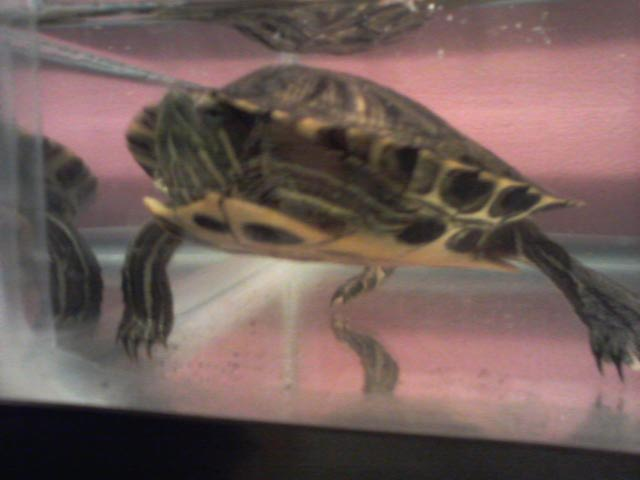 HELP!!!
QuestionMy RES Turtle
The Tank
QUESTION:
HELP!!!
QuestionMy RES Turtle
The Tank
QUESTION:
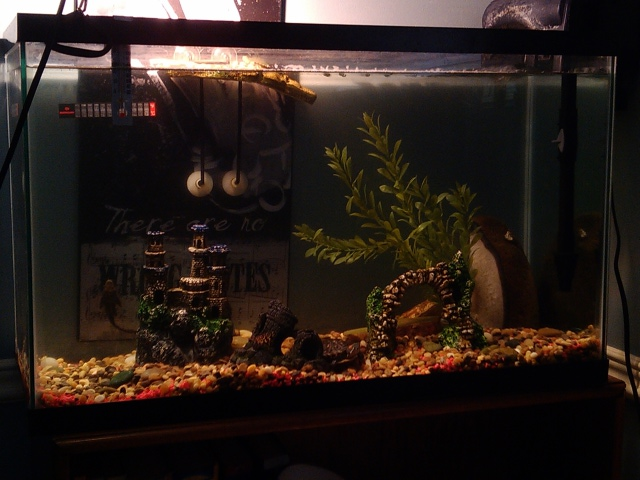 Red Eared Slider
QuestionQUESTION: I have had a red eared slider for abo
Red Eared Slider
QuestionQUESTION: I have had a red eared slider for abo
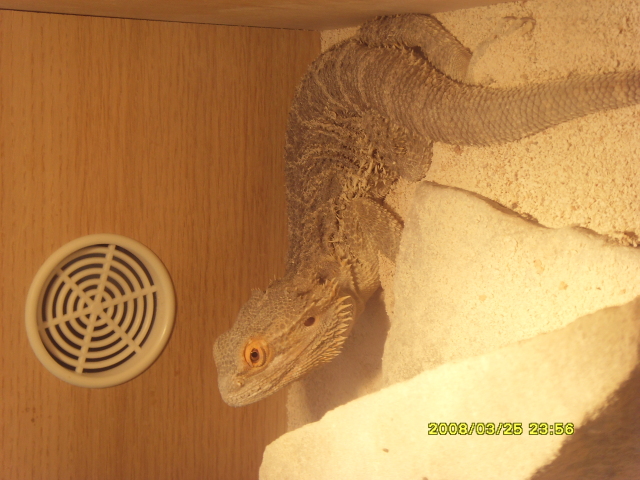 bearded dragon 2years old male
Question
spike
hi Sara i have adopted my friends beadie
bearded dragon 2years old male
Question
spike
hi Sara i have adopted my friends beadie
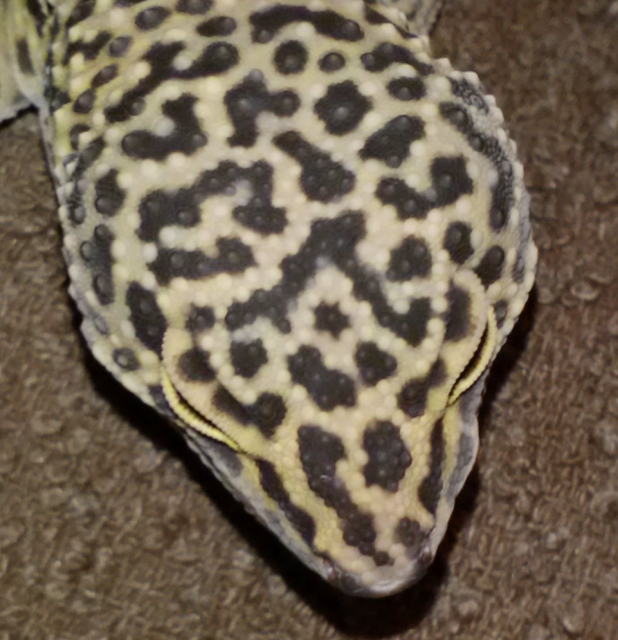 Leopard Gecko abcess
QuestionQUESTION: Ive had my female leopard gecko for 2
Leopard Gecko abcess
QuestionQUESTION: Ive had my female leopard gecko for 2
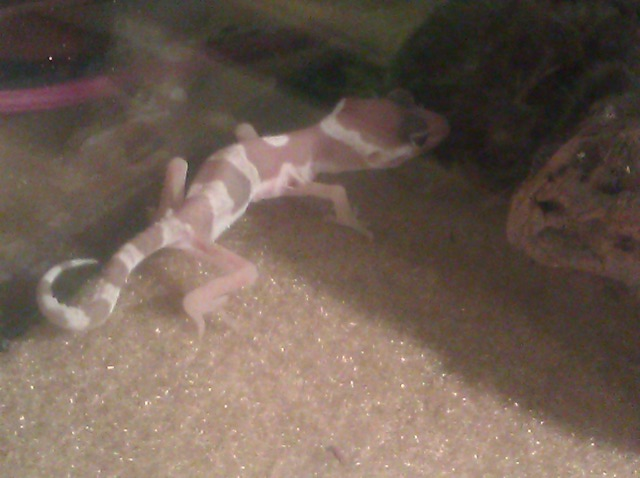 Baby Leo SICK
Question
Leo SICK
I just recently bought a
Baby Leo SICK
Question
Leo SICK
I just recently bought a